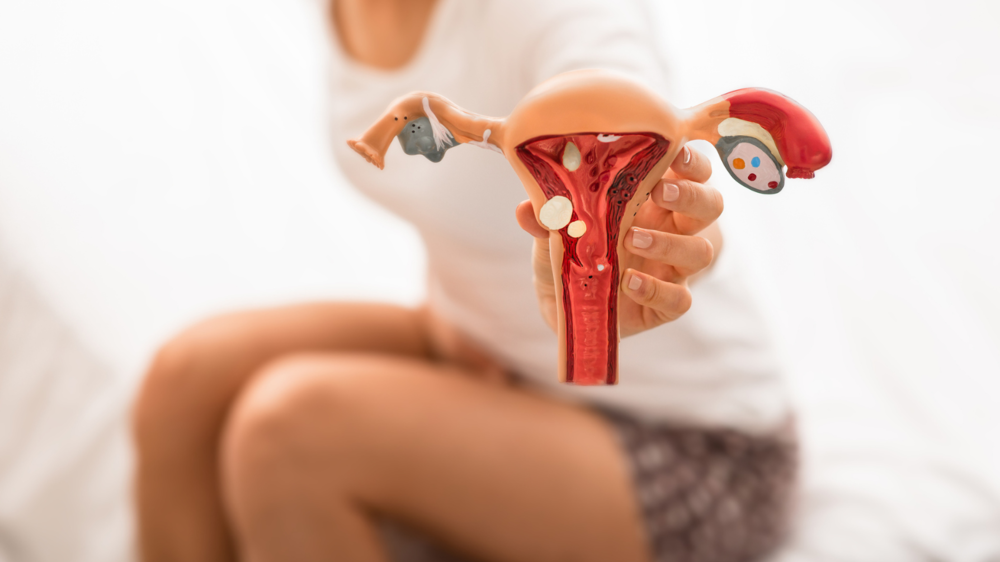In this article:
In many fertility evaluations, clinicians focus on hormonal health, measuring oestrogen, progesterone, LH, FSH, and AMH, and overlook local uterine factors that affect implantation. But implantation doesn’t depend on hormones alone. If the endometrial lining remains persistently thin (typically under 7 mm at ovulation or transfer), it can significantly reduce the chances of embryo attachment, even if your hormonal picture looks fine on paper.
Let’s explore what this condition really involves, why it’s so often missed, and what hopeful parents can do about it.
What Is a Thin Uterine Lining?
The endometrium is the inner layer of the uterus that thickens each cycle in response to rising oestrogen levels. Its role is to create a nutrient-rich, receptive surface for embryo implantation.A lining under 7 mm on the day of ovulation or embryo transfer is generally considered “thin.” Ideally, fertility specialists look for an 8–12 mm trilaminar (three-line) appearance for optimal implantation. But even if your oestrogen levels are normal and you’re ovulating regularly, the lining may fail to reach this threshold.
This disconnect between hormone labs and uterine response is at the heart of why so many cases are missed.
Why It Matters for Fertility and IVF Success
Even a genetically normal embryo may fail to implant if the endometrial environment is suboptimal. Here’s why a thin lining poses risks:- Reduced implantation rates: Multiple studies show lower pregnancy rates in patients with a lining <7 mm, especially in IVF cycles.
- Higher miscarriage risk: A thin endometrium may not sustain the embryo long enough, even if implantation begins.
- Poor embryo-nutrient exchange: A thinner lining may lack adequate blood flow and glandular support to nourish early pregnancy.
- Failed frozen embryo transfer (FET): Even with good-quality frozen embryos, the cycle may fail solely due to inadequate endometrial preparation.
Causes of Thin Lining Despite Normal Hormones
In many cases, the ovaries are doing their job, but the uterus isn't responding. Here are common reasons:- Chronic endometrial inflammation (chronic endometritis): Low-grade, often asymptomatic inflammation can prevent proper lining growth.
- Poor uterine blood flow: Even with enough oestrogen, insufficient perfusion may impair tissue development.
- Receptor resistance: The endometrium may be resistant to oestrogen despite normal serum levels, possibly due to altered receptor function.
- Previous uterine surgery or infections: Procedures like D&C or infections like tuberculosis (common in Indian patients) can scar or thin the endometrium.
- Repeated Clomid use: Prolonged use of ovulation stimulants like clomiphene citrate can reduce endometrial thickness in some people.
How It's Diagnosed and Often Missed
Routine fertility tests typically focus on:- Day 2–3 hormone profile (FSH, LH, oestrogen)
- Day 21 progesterone
- AMH and antral follicle count
- Semen analysis
- Tubal patency test (HSG or SIS)
- Blood flow via Doppler ultrasound
- Endometrial pattern (triple-line vs homogeneous)
- Response over several cycles
- Microbiome or histological changes (e.g., chronic endometritis biopsy)
Treatment and Management Options
A thin endometrium doesn’t mean the end of the road. Some of the following strategies may help:- Extended oestrogen priming: Longer or higher-dose estradiol therapy in FET cycles.
- Vaginal oestrogen: Direct application can increase local absorption and thickness.
- Low-dose aspirin or pentoxifylline: Improves uterine blood flow, though evidence is mixed.
- Sildenafil (Viagra): Administered vaginally in some cases to increase uterine perfusion.
- PRP (Platelet-rich plasma): Emerging treatment where plasma is infused into the uterus to stimulate growth.
- Antibiotics for chronic endometritis: Requires biopsy-based diagnosis, but may resolve inflammation.
- Endometrial scratching: Controversial, but may improve receptivity in specific cases.
Emotional and Practical Support When You Feel Overlooked
Being told “everything looks normal” while facing repeated IVF failures is deeply frustrating and emotionally draining. If you’ve had more than one failed embryo transfer, especially with a thin lining noted, ask for a second opinion.- Keep track of ultrasound thickness and patterns over multiple cycles
- Ask about endometrial biopsy, Doppler blood flow studies, or ERA testing
- Don’t hesitate to switch clinics if you feel your concerns aren’t being taken seriously
A thin uterine lining, especially when paired with normal hormonal results, is one of fertility’s most under-recognised hurdles. But it's not invisible, and it’s certainly not untreatable. With the right awareness, testing, and support, it’s possible to uncover this blind spot and take meaningful action on your fertility journey. Your instincts matter. If something feels overlooked, ask again, because your story deserves full attention.
FAQs on Thin Uterine Lining Despite Normal Hormones: Diagnostic Blind Spots in Fertility Evaluations
- Can I still get pregnant with a thin endometrial lining?
Yes, but chances are lower. Many pregnancies have occurred with <7 mm linings, but overall success rates drop significantly. - Will my hormones show anything is wrong?
Not necessarily. You can have a completely normal hormonal profile and still have a thin, unreceptive lining. - Is this treatable?
In many cases, yes—especially if the cause (inflammation, poor blood flow, oestrogen resistance) is identified and addressed. - Should I push for additional tests if IVF keeps failing?
Absolutely. Especially if your embryo quality is good, it’s important to investigate uterine receptivity and lining thickness.






